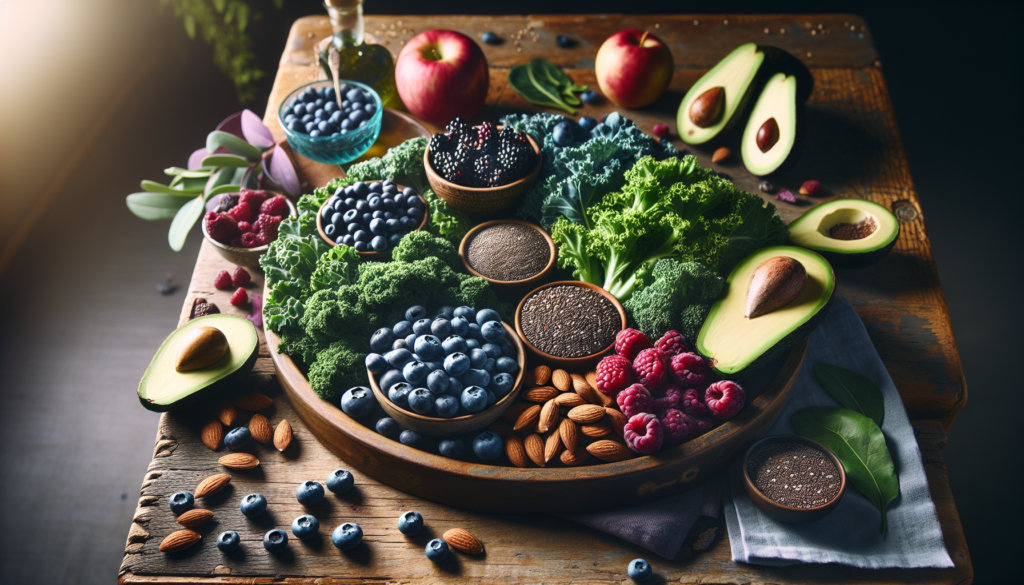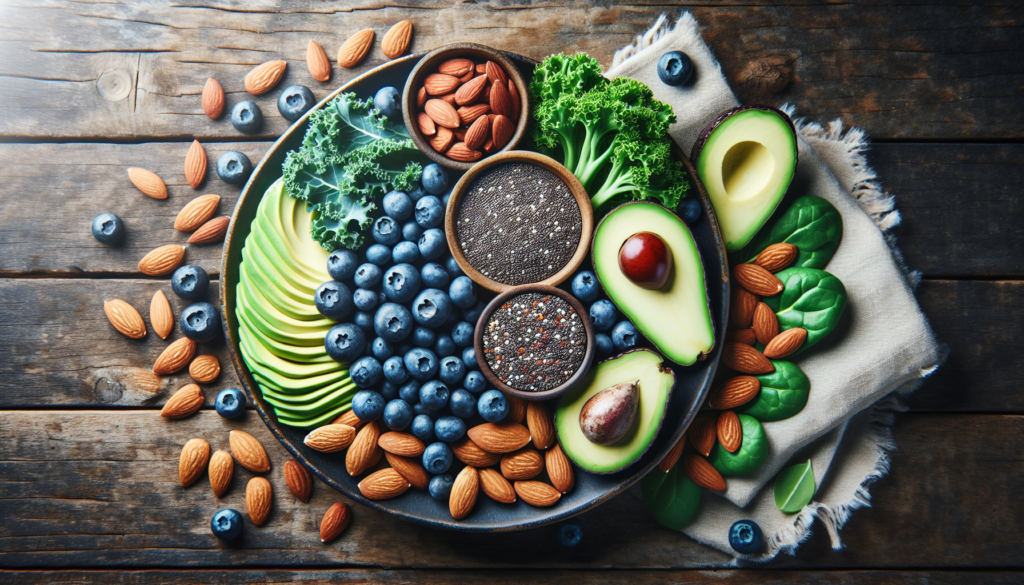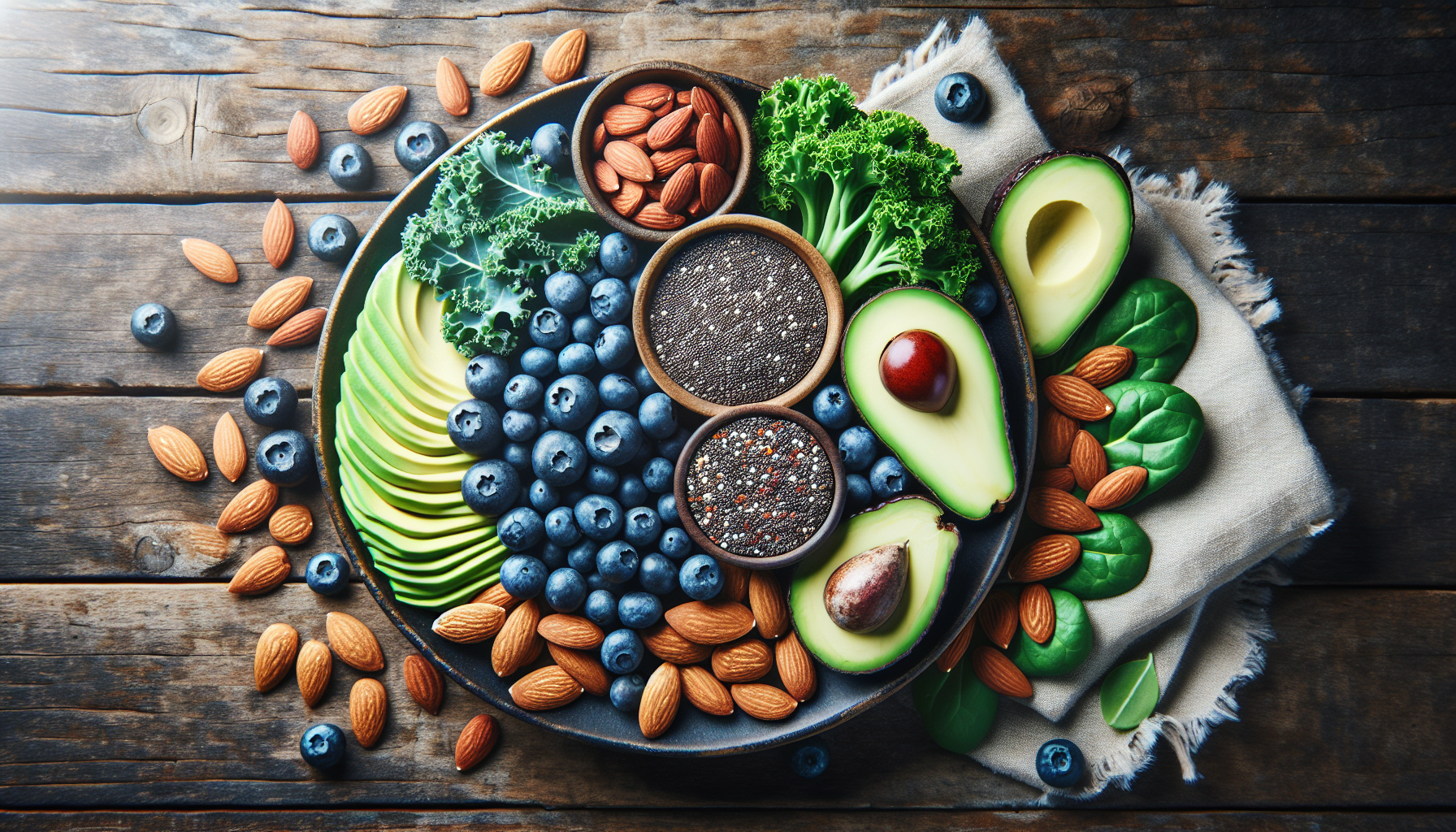Have you ever stared at a chia seed and thought, “Could this tiny little orb truly unlock the mysteries of the universe?” Then, as you juggle a spoonful of quinoa with one hand and brew a matcha latte with the other, you might find yourself wondering, “Are these so-called ‘superfoods’ really worth forsaking my beloved fries and triple cheese pizza?” Welcome to the gastronomic Twilight Zone that is superfoods—a land where kale reigns supreme and blueberries get more Instagram likes than your cat.
What Are Superfoods and Why Should You Care?
Superfoods are like the superheroes of the food world, except they won’t save you from a burning building (unless you, perhaps, find yourself in a kale salad factory with a misplaced cigarette). According to the whispers of nutritional folklore and the persuasive powers of marketing magicians, these foods pack more punch than others, sporting higher levels of nutrients, antioxidants, and other health-enhancing properties. But are they truly capable of leaping tall ailments in a single bound, or is it all more hype than help?
The Origins of the Superfood Phenomenon
Before you marched off to buy a kilo of hemp seeds, it’s worth pondering where this superfood frenzy started. History may surprise you. Back when pharaohs trumpeted their unearthly penchant for figs and Cleopatra rubbed her cheek with acai berries (or maybe just olive oil), superfoods were more exotic curiosities than the staples they’ve become in today’s health-conscious society. In the early 20th century, the scientific community began examining foods more closely, and voila! Superfoods emerged faster than you can say “goji berry.”
The Science Behind Superfoods
Let’s cut through the marketing puffery and examine these so-called magical morsels under a scientific microscope—or possibly a magnifying glass, because, trust me, they’ll still look just as small and innocent. Scientific studies often suggest that superfoods are high in beneficial nutrients—like antioxidants, vitamins, and minerals—that can significantly impact health when consumed consistently (and not just when sprinkled over that once-a-month salad).
The Role of Antioxidants
Antioxidants are like the bodyguards of your cells. They fend off “free radicals,” which sounds like a punk rock band but is, in fact, a group of rogue molecules that can cause cellular damage, leading to a range of chronic diseases. Foods high in antioxidants aim to crack the whip on these radicals faster than a cowboy movie marathon.
Nutrient Density
It’s the difference between a splash in the kiddie pool and diving deep into the ocean. Superfoods are often nutrient-dense, meaning they pack a hefty punch of vitamins and minerals without a lot of fluff. Imagine consuming all the good stuff—like consuming a symphonic orchestra of nutrients rather than a single kazoo. Pretty impressive, right?
Superfoods: Fact or Fiction?
Now, before you go selling all your worldly possessions to invest in spirulina stocks, let’s douse you with a cold bucket of reality-check water. While scientific evidence backs up certain claims about specific superfoods, the term itself can be misleading—a linguistic sorcery meant for more marketing appeal than nutritional enlightenment.
Commonly Overhyped Superfoods
Acai Berries
Once a mysterious Amazonian fruit, acai berries have become the darlings of the juice bar world, promoted as a weight-loss miracle. In reality, they’re essentially the diet culture’s version of a celebrity cameo: pretty to look at but ultimately adding little depth to your plot line. While high in antioxidants and vitamins, consuming them alone won’t have you fitting into those 90s jeans by next Tuesday.
Coconut Oil
Once lauded as the miracle oil that could make your skin glow like you’re not binging on Netflix past 1 a.m., coconut oil has faced a backlash for its high saturated fat content. While it has its uses—both culinary and in fancifying pet hair—it’s not going to moisturize away all your dubious dietary choices.
Avocados
Avocado toast: It’s the culinary photo-op that defines generations. While avocados are indeed rich in healthy fats, potassium, and vitamins, asking them to replace your daily requirements of any/all other essential nutrients is akin to asking an avocado pit to double as a boutonniere.

Superfoods With Evident Benefits
Not all superfoods are cloaked in mystery and deceit. Some do come wielding a bounty of benefits, brandishing a résumé that even Gwyneth Paltrow’s personal chef would applaud.
The Blueberry: A Small but Mighty Morsel
Yes, this tiny blue fruit might just be your new best friend (conditions apply). Bursting with antioxidants known as flavonoids, blueberries have been linked to diminishing the risk of heart disease, improving memory, and quite possibly being more adorable than a basket of kittens.
Quinoa: The Ancient Grain of Truth
Once the cycling short of the Incan empire, quinoa is now gastronomic royalty. This little grain isn’t just hip because it’s fun to say—keen-wah!—but it’s also one of the most complete plant-based proteins available. It’s like a club sandwich in a single morsel, minus the bacon, unfortunately.
Matcha: More Than Just a Trendy Tea
Matcha isn’t just Dusty Springfield’s favorite drink (it’s true, look it up). This powdered tea is packed with catechins, a type of antioxidant that’s more potent than even Taylor Swift’s breakup albums. Consuming matcha can potentially aid in weight loss, improve mood, and boost concentration—assuming your attention isn’t wavering, contemplating a potential caffeine crash.
Incorporating Superfoods Into Your Diet Without Living in a Treehouse
Ah, the question of our times: How do you incorporate these nutritional heroes into your diet without resorting to dwelling in a treehouse like an over-eager squirrel?
Breakfast Bonanza: Start With a Superfood Wake-Up Call
Skip the sugar-crash cereal and begin your day with a bowl of oatmeal sprinkled with a medley of berries. Or perhaps indulge in a smoothie bowl topped with leafy greens like spinach or kale, laced with chia seeds for good measure. An acai bowl, while trendy, can substitute your usual papier-mâché breakfast stapled together with processed sugars.
Lunch Approaches: Avoid #SadDeskLunch Syndrome
Turn that lackluster desk salad into a triumph by introducing quinoa, avocado slices, and a fistful of pumpkin seeds. Brag about it in the break room sleepily; your colleagues are experiencing lunchtime déjà vu from the 17th chicken Caesar salad this month.
Dinnertime Diversion: Shake up the Menu
How about some salmon, rich in omega-3 fatty acids, served with a side of quinoa and roasted veggies? Or a hearty dollop of hummus with whole-grain pita, complemented by a side dish of nutrient-dense kale chips. These meals adopt superfoods without looking like you’ve just landed from a far-off health commune.

The Superfood Skeptic: When to Believe (and Not Believe) the Hype
Feeling daunted? You’re not alone. The supermarket aisle can seem like a kaleidoscope of nutrient claims mixed with more grains than a grain silo. The trick is learning to sift through these with a critical eye rather than resorting to hurling your grocery list into the vehement winds of marketing.
Evaluating the Credibility of Superfood Claims
Before you stock up on goji berries by the ten-pound sacks, it’s crucial to understand what qualifies as credible. Peer-reviewed studies hold more weight than anecdotal proclamations by your friend who’s joined the latest Instagram health cleanse. Dive into reputable nutritional journals and websites for data not drowned in hyperbole.
Everything in Moderation, Including Moderation
Remember that balance is key. A diet comprising solely of kale smoothies will likely result in you both resenting the color green and your local smoothie vendor. Integrating superfoods alongside a balanced, nutrient-rich diet is more sustainable—and enjoyable—than extreme shifts towards selective eating.
Embrace Superfoods Without the Hero Complex
Don’t feel pressured to solely rely on superfoods to carry the Herculean task of revitalizing your health. They are part of a holistic dietary picture, just one note in the symphony of a well-balanced meal plan. So, while quinoa sits contentedly in your cupboard beside some dusty baking soda, let it occasionally accompany your lunch like a well-meaning but slightly eccentric friend.
The Future of Superfoods: What’s Next in the Health Parade?
Hold onto your spirulina, because the realm of superfoods keeps expanding! The future might hold intriguing additions, possibly born from unique sources like insects or algae—foods that sound as if they belong more in a sci-fi novel than your dinner plate. As these evolve, and with them the marketing claims, consumers should remain cautious, adventurous, and most importantly, discerning.
Wrapping Up the Superfood Sashay
So, what’s the final verdict? Are superfoods the culinary panacea or just a dashed bit of garnish on the dish of life? A balanced mix of scientific understanding, critical evaluation, and adventurous palate might just help you strike the perfect harmony. It’s crucial to remember that no single food will accomplish all your dietary goals—until science invents chocolate kale, anyway. Until then, keep your mind open and your plate full.
